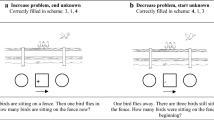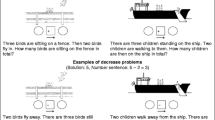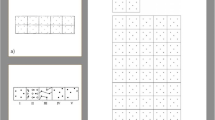Abstract
Background and aims
Pictograms, designed to be a universal communication system, are often created from several concrete and easily recognizable drawings. Does understanding depend on a logical approach? Or is it the ability to inhibit the concrete sense of each picture that allows access to a higher level of comprehension? (ability to abstract). These executive functions are sensitive to the effects of aging and educational level. The aim of our study was to evaluate the nature of the cognitive processes underlying the meaning of pictograms and to test the effect of aging and educational level.
Methods
We enrolled 19 older adults (60–69 years old) and 63 young adults (20–29 years old). Of these 63 young adults, 43 had a high educational level (Young-High participants), and 20 had a lower educational level (Young-Low participants). Each participant was asked the meaning of 20 pictograms and underwent an assessment of abstraction and logical abilities with WAIS-III test.
Results
Older adults had lower pictogram assessment scores and abstraction and logical abilities when compared with young adults. In both groups, abstraction and logical abilities were correlated with the interpretation of pictograms but only abstraction ability remains strongly correlated with pictogram comprehension in the older group after adjustment of sex, age and educational level. Consequently, the poorer performances of older adults to determine the meaning of pictograms could be explained by the decline of abstraction ability in elderly.
Conclusions
Pictograms are not the universal communication system as we formerly thought. Age and educational level may influence the performance in determining the meaning of pictograms.

Similar content being viewed by others
References
Tijus C, Barcenilla J, Cambon de Lavalette B, Meunier JG (2005) The design, understanding and usage of pictograms. In: Alamargot D, Terrier P, Cellier JM (eds) Improving the production and understanding of written documents in the workplace. Elsevier Publishers, Amsterdam, pp 17–32
Bordon E (2004) Comment les pictogrammes sont interprétés par des lecteurs ordinaires? Communication et langages 142:43–52
Tourneux H (1994) L’interprétation paysanne des pictogrammes phytosanitaires. Agriculture et développement 1:10–13
Wilkinson R, Cary J, Barr N, Reynolds J (1997) Comprehension of pesticide safety information: effects of pictorial and textual warnings. Intern J Pest Manag 43:239–245
Al-Madani H, Al-Janahi A (2002) Assessment of drivers’ comprehension of traffic signs based on their traffic, personal and social characteristics. Transport Res Part F 5:63–76
Ells JG, Dewar RE (1979) Rapid comprehension of verbal and symbolic traffic sign messages. Hum Fact 21:161–168
Davies S, Haines H, Norris B, Wilson JR (1998) Safety pictograms: are they getting the message across? Appl Ergon 29:15–23
Dowse R, Ehlers MS (1998) Pictograms in pharmacy. Intern J Pharm Pract 6:109–118
Dowse R, Ehlers MS (2003) The influence of education on the interpretation of pharmaceutical pictograms for communicating medicine instruction. Intern J Pharm Pract 11:11–18
Knapp P, Raynor DK, Jebar AH, Price SJ (2005) Interpretation of medication pictograms by adults in the UK. Ann Pharmacother 39:1227–1233
Barcenilla J, Tijus C (2002) Compréhension et évaluation de pictogrammes: effets du contexte. Psychologie Française 47:55–64
Droste FG (1976) The grammar of traffic signs. Semiotica 5:256–262
Szlichcinski KP (1980) The syntax of pictorial instructions. In: Kolers PA, Wrolstad ME, Bouma H (eds) Processing of visible language, 2nd edn. Plenum Press, New-York, pp 113–124
Van der Linden M, Seron X, Le Gall D, Andres P (1999) Neuropsychologie des lobes frontaux. Solal, Marseille
Alvarez JA, Emory E (2006) Executive function and the frontal lobes: a meta-analytic review. Neuropsychol Rev 16:17–42
Lorenz-Reuter PA (2000) Cognitive neuropsychology of the aging brain. In: Park DC, Schwarz N (eds) Cognitive aging: a primer. Psychology Press, Philadelphia, pp 93–114
Raz N (2000) Aging of the brain and its impact on cognitive performance: integration of structural and functional findings. In: Craik FIM, Salthouse TA (eds) The handbook of aging and cognition, 2nd edn. Lawrence Erlbaum Associates, Mahwah, pp 1–90
Plumet J, Gil R, Gaonac’h D (2005) Neuropsychological assessment of executive functions in women: effects of age and education. Neuropsychology 195:66–77
Kempler D, Teng EL, Dick M, Taussiq IM, Davis DS (1998) The effects of age, education, and ethnicity on verbal fluency. J Intern Neuropsychol Soc 4:531–538
Folstein MF, Folstein SE, McHugh PR (1975) Mini-mental state: a practical method for grading the cognitive state of patients for the clinician. J Psychiatr Res 12:189–198
Gregoire J (2004) Factor structure of the French version of the Wechsler adult intelligence scale-III. Educ Psychol Measur 64:463–474
Daigneault G, Joly P, Frigon JY (2002) Executive functions in the evaluation of accident risk of older drivers. J Clin Exp Neuropsychol 2002(24):221–238
Lafont S, Marin-Lamellet C, Paire-Ficout L, Thomas-Anterion C, Laurent B, Fabrigoule C (2010) The Wechsler digit symbol substitution test as the best indicator of the risk of impaired driving in Alzheimer disease and normal aging. Dement Geriatr Cogn Disord 29:154–163
Conflict of interest
None.
Author information
Authors and Affiliations
Corresponding author
Rights and permissions
About this article
Cite this article
Beaufils, E., Hommet, C., Brault, F. et al. The effect of age and educational level on the cognitive processes used to comprehend the meaning of pictograms. Aging Clin Exp Res 26, 61–65 (2014). https://doi.org/10.1007/s40520-013-0179-6
Received:
Accepted:
Published:
Issue Date:
DOI: https://doi.org/10.1007/s40520-013-0179-6




